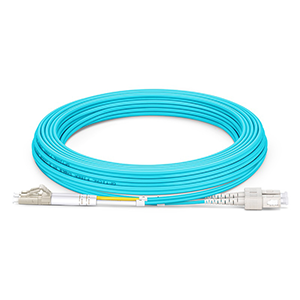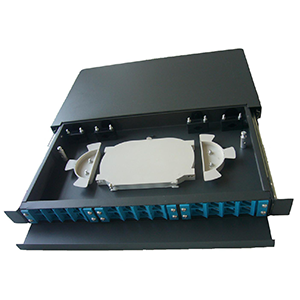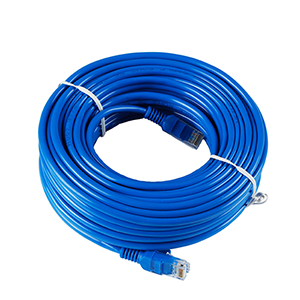High-speed optical modules undoubtedly play an important role in network transmission. This article will focus on the transmission rate of 10G SFP optical modules. We will first review the technical evolution of Ethernet optical modules from 1G to 100G and analyze the differences between optical modules of different rates in application scenarios. Next, we will define the technical specifications and interface standards of 10G SFP optical modules and explain their advantages in terms of size, power consumption, etc.
We will introduce the standard transmission rate of 10G SFP optical modules in detail and analyze the key technical factors that affect the transmission rate. In addition, we will list the typical applications of 10G SFP optical modules in various networks and explain the specific requirements of different applications for transmission rate. Finally, we will introduce the standard method for testing the transmission rate of 10G SFP optical modules and share implementation suggestions for verifying transmission performance in actual environments.
Ethernet optical module standards and their development history
Let me give you a brief introduction to the technical development history of Ethernet optical modules and the differences between optical modules of different rates in application scenarios.
Technical evolution of Ethernet optical modules:
(1) 1GbE optical modules
- The earliest Ethernet optical modules, including SX, LX, ZX series, support 1Gbps transmission rate.
- Widely used in enterprise LAN, campus network and other environments, providing Gigabit Ethernet fiber connection.
(2) 10GbE optical modules
- Including SFP+, XFP, X2 series, support 10Gbps transmission rate.
- Suitable for high-speed Ethernet environments such as backbone networks and data centers to meet higher bandwidth requirements.
(3) 40GbE optical modules
- Mainly including QSFP+ series, support 40Gbps transmission rate.
- Applied to high-performance computing, large data centers and other scenarios, providing higher port density and bandwidth.
(4) 100GbE optical module
- Including QSFP28, CFP4 and other series, supporting 100Gbps transmission rate.
- Applicable to future higher bandwidth backbone networks and data center networks.
In general, the technological evolution of Ethernet optical modules is accompanied by the continuous increase in network bandwidth requirements, from 1Gbps to 100Gbps, meeting the needs of different application scenarios for high-speed interconnection.
Differences between optical modules of different rates in application scenarios:
(1) 1GbE optical module
- Applicable to network environments with low bandwidth requirements such as small and medium-sized enterprises and campuses.
- The cost is relatively low, suitable for price-sensitive users.
(2) 10GbE optical module
- Applicable to large enterprises, operator access networks, data centers and other environments with high bandwidth requirements.
- Can meet the needs of higher performance applications, such as cloud computing and virtualization.
(3) 40GbE optical module
- Applicable to high-performance computing clusters, large data centers and other scenarios with extremely high bandwidth requirements.
- Can provide higher port density and overall bandwidth to meet large-scale parallel computing and data processing.
(4) 100GbE optical module
- Applicable to future backbone networks and ultra-large-scale data centers with ultra-high bandwidth requirements.
- It can provide more powerful transmission capabilities for the most critical links in the network.
In general, the differences in application scenarios of Ethernet optical modules of different rates are mainly reflected in bandwidth requirements, port density, cost, etc. When designing a network, it is necessary to select the appropriate optical module technology according to actual needs.
Technical characteristics of 10G SFP optical module
Let me introduce the technical characteristics of 10G SFP optical module in detail.
Technical specifications and interface standards of 10G SFP optical module:
(1) Technical specifications
- The technical specifications of 10G SFP optical module are mainly defined by the IEEE 802.3ae standard.
- This standard was released in 2002 and defines the technical requirements of 10GbE Ethernet.
- 10G SFP optical module complies with this standard and supports 10Gbps Ethernet transmission rate.
(2) Interface standard
- 10G SFP optical module adopts SFP+ physical interface standard.
- SFP+ is an upgraded version of SFP interface, and its appearance is fully compatible with SFP.
- Through SFP+ interface, 10G SFP optical module can be directly inserted into SFP+-supported devices.
Size and power consumption advantages of 10G SFP optical module:
(1) Size advantage
- 10G SFP optical module adopts SFP+ interface, and its volume is only half of SFP.
- This compact size is conducive to the port density and layout optimization of the equipment.
(2) Power consumption advantage
- The power consumption of 10G SFP optical modules is usually between 1-3 watts, which is relatively low.
- The lower power consumption is conducive to reducing equipment operating costs and reducing heat dissipation requirements.
Compared with the large-sized 10G XFP optical modules, 10G SFP optical modules have obvious advantages in size and power consumption:
- The small size is conducive to high-density layout and compact design.
- Low power consumption can reduce the power supply and heat dissipation pressure of the equipment.
These characteristics make 10G SFP optical modules widely used in high-speed Ethernet devices such as servers, switches, and routers, and are an important part of 10GbE networks. In short, 10G SFP optical modules have good characteristics in terms of technical standards, size, and power consumption, and can effectively meet the diverse needs of 10GbE network environments.
10G SFP optical module transmission rate
Let me introduce you in detail the standard transmission rate of 10G SFP optical module and the key technical factors that affect the transmission rate.
Standard transmission rate of 10G SFP optical module:
(1) Standard rate
- The standard transmission rate of 10G SFP optical module is 10.3125Gbps.
- This rate is based on the 10GbE Ethernet technical requirements specified in the IEEE 802.3ae standard.
(2) Net effective rate
- In the total transmission rate of 10.3125Gbps, the actual net effective data rate is about 10Gbps.
- This is because some code elements and error detection overhead need to be added during the transmission process.
In general, the standard transmission rate of 10G SFP optical module is 10.3125Gbps. After deducting related overhead, the actual effective data rate is about 10Gbps, which meets the technical requirements of 10GbE network.
Key technical factors affecting the transmission rate of 10G SFP optical module:
(1) Optical design
- The optical parameters of the optical transceiver module, such as optical power and signal-to-noise ratio, directly affect the transmission rate and distance.
- Good optical design can improve transmission stability and anti-interference ability.
(2) Electronic circuit design
- The design of circuit layout, crosstalk suppression, clock coding, etc. for high-speed signals is crucial.
- Optimizing electronic circuits can reduce signal distortion and improve transmission reliability.
(3) Fiber quality
- Fiber loss, dispersion, PMD and other characteristics will affect the transmission rate and distance.
- Selecting high-quality optical fiber will help improve the transmission performance of 10G SFP optical modules.
(4) Environmental factors
- Environmental factors such as temperature and humidity will also affect the working status and reliability of optical modules.
- Good environmental conditions are conducive to ensuring the stable transmission of 10G SFP optical modules.
In short, the high-speed transmission of 10G SFP optical modules requires the coordinated optimization of multiple technical factors such as optics, electronic circuits, fiber quality and environmental factors to achieve its standard transmission rate of 10Gbps. These technical details are the key to affecting the performance of 10G SFP optical modules.
10G SFP optical module rate requirements in different applications
Let me introduce you to the rate requirements of 10G SFP optical modules in different network applications.
Typical application scenarios of 10G SFP optical modules:
(1) Enterprise LAN
- 10G SFP optical modules can be used to connect high-performance servers, storage devices, etc.
- Support traditional data centers as well as emerging applications such as cloud computing and virtualization.
(2) Operator access network
- 10G SFP optical modules can be used to connect fiber-optic access user equipment.
- Meet the high-speed access requirements of fiber-to-the-home such as FTTH and FTTB.
(3) Data Center Networks
- 10G SFP optical modules can be used in key links such as server-switch and switch-router.
- Support high-density virtual machine deployment and big data processing applications.
(4) High-performance Computing Networks
- 10G SFP optical modules can connect server nodes in high-performance computing clusters.
- Provide the required high-bandwidth, low-latency interconnection capabilities.
In general, 10G SFP optical modules are widely used in different scenarios such as enterprise networks, carrier networks, and data centers.
Specific requirements for the transmission rate of 10G SFP optical modules in different applications:
(1) Enterprise LAN
- Requires 10G SFP optical modules to provide a stable 10Gbps transmission rate.
- Meet the bandwidth requirements of high-performance servers, storage and other devices.
(2) Operator access network
- Requires 10G SFP optical modules to reliably provide 10Gbps access rate.
- Meet the requirements of symmetrical high-speed uplink and downlink of fiber access users.
(3) Data center network
- There are higher requirements for the transmission rate of 10G SFP optical modules, which need to reach a full load of 10Gbps.
- Support the network bandwidth required for large-scale virtualization and massive data processing.
(4) High-performance computing network
- There are extremely high requirements for the rate of 10G SFP optical modules, which need to reach full load or even exceed 10Gbps.
- Ensure high-speed interconnection between high-performance computing nodes and reduce communication latency.
In short, different network applications have different requirements for the transmission rate of 10G SFP optical modules, from basic 10Gbps to higher rate requirements, which need to be selected and deployed according to actual scenarios.
Testing and verification of 10G SFP optical module transmission rate
Let me introduce you to the standard methods and implementation recommendations for testing and verifying the transmission rate of 10G SFP optical modules.
Standard method for testing the transmission rate of 10G SFP optical modules:
(1) Test using test instruments
- Common test instruments include network analyzers, optical time domain reflectometers, etc.
- These instruments can accurately measure the optical power, loss, bandwidth and other parameters of optical modules.
- And verify the transmission rate indicators of 10G SFP optical modules according to the requirements of IEEE 802.3ae standard.
(2) Use benchmark test platform
- Some professional test laboratories will build benchmark test platforms that meet the standards.
- Using standard test cases on this platform, the transmission performance of 10G SFP optical modules can be comprehensively evaluated.
- The test results can be used as the performance certification basis for optical module products.
(3) Using network simulation software
- Network simulation software can also be used to simulate and test the 10G SFP optical module.
- Simulate the actual application environment by setting parameters such as network topology and link characteristics.
- Evaluate the transmission rate performance of 10G SFP optical modules in different network scenarios.
Implementation suggestions for verifying the transmission performance of 10G SFP optical modules in actual environments:
(1) Consider the actual application environment
- Design a verification plan based on the specific network environment in which the 10G SFP optical module will be used.
- Including the influence of factors such as network topology, fiber length, and wiring method.
(2) Use end-to-end testing
- In actual networks, an end-to-end approach should be used to verify transmission performance.
- From the optical module transmitter to the receiver, measure end-to-end rate, delay and other indicators.
(3) Simulate actual load
- During the verification process, the actual business load should be simulated as much as possible.
- The actual transmission capacity of the 10G SFP optical module can be verified by sending large traffic data packets.
(4) Record environmental parameters
- Record relevant parameters such as ambient temperature and humidity at the same time, and analyze their impact on transmission performance.
- For critical applications, the stability of the 10G SFP optical module in harsh environments can be further tested.
In short, testing and verifying the transmission rate of the 10G SFP optical module requires combining standard methods and actual application scenarios to comprehensively evaluate its transmission performance in various network environments. This helps ensure that the 10G SFP optical module can reliably meet business needs.
Summary
Reasonable deployment and verification of the transmission performance of 10G SFP optical modules are crucial for high-speed network construction. Our company has long been focusing on the research and development and production of optical communication equipment and its supporting products, and has rich industry experience. Our 10G SFP optical module products have reached the industry-leading level in terms of transmission rate and reliability, and can meet your demanding needs for high-bandwidth network construction.
Whether you need to deploy 10G SFP optical modules in telecom operator networks, data centers, or enterprise parks, we can provide you with customized solutions. At the same time, our professional team will provide you with a full range of technical support, including on-site surveys, solution design, equipment installation and performance testing. Contact us now to learn more about the application of 10G SFP optical modules.
10G SFP Optical Module Transmission Rate FAQ
The standard transmission rate for a 10G SFP+ optical module is 10 Gigabits per second (10 Gbps).
10G SFP+ optical modules typically use single mode or multimode fiber optic cabling, depending on the module type.
The maximum transmission distance can range from 300m for multimode fiber to 80km for single mode fiber, depending on the specific module.
No, the 10 Gbps transmission rate remains the same regardless of the fiber optic cable type or length, within the supported distance specifications.
Yes, 10G SFP+ modules come in various form factors, wavelengths, and reach capabilities to suit different networking applications.
Yes, 10G SFP+ optical modules are designed to be compatible and interoperate with 10 Gigabit Ethernet network devices.
Power consumption for 10G SFP+ optics is generally in the 1-3 watt range, depending on the specific module.
Yes, 10G SFP+ optical modules are designed to be hot-swappable, allowing them to be replaced without powering down the network equipment.
The module’s part number and technical specifications will clearly indicate the supported 10 Gbps transmission rate.
No, a standalone 10G SFP+ optical module cannot be directly used in higher speed 40GbE or 100GbE networks. Separate 40G or 100G optics would be required.




